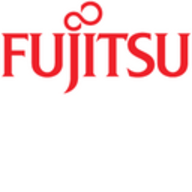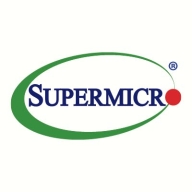

Fujitsu Primergy BX900 Series and Supermicro SuperBlade are competing in the blade server market. Fujitsu Primergy BX900 Series is deemed superior in terms of pricing and customer support, while Supermicro SuperBlade is more advanced in performance and features.
Features: Fujitsu Primergy BX900 Series offers robust scalability, advanced energy management, and efficient power usage, making it ideal for data centers. Supermicro SuperBlade focuses on high-density computing capabilities, extensive I/O options, and enhanced computational power for high-demand tasks.
Ease of Deployment and Customer Service: Fujitsu Primergy BX900 Series ensures a straightforward deployment process with strong customer support, aiding integration into infrastructures. Supermicro SuperBlade, although more complex to set up, provides a vast online knowledge base to assist users.
Pricing and ROI: Fujitsu Primergy BX900 Series offers a cost-effective setup with better ROI due to lower energy expenses. Supermicro SuperBlade requires a higher upfront investment but yields quick performance benefits and long-term gains in performance-intensive situations.
| Product | Market Share (%) |
|---|---|
| Supermicro SuperBlade | 8.0% |
| Fujitsu Primergy BX900 Series | 2.5% |
| Other | 89.5% |

The Fujitsu Server PRIMERGY BX900 S2 chassis is the rock-solid foundation for Fujitsu's blade ecosystem, providing a reliable, flexible and efficient platform for building a converged infrastructure. The system provides a modular approach to create an IT infrastructure. The chassis includes all needed infrastructure elements such as power supplies and fans, networking, and management. The Fujitsu blade server is easy to upgrade, maintain and customize. Inside, you can mix and match almost any combination of server storage and connection blades to run your choice of operation systems and applications.
Supermicro SuperBlade delivers innovative computing performance and efficiency, perfect for data-intensive tasks. With its modular design, it optimizes space and power, providing a flexible and scalable infrastructure for demanding business workloads.
Supermicro SuperBlade is specifically engineered for modern data centers needing high-density computing. It offers a compact, modular architecture that simplifies system management and enhances agility. It integrates seamlessly with cloud and virtualization technologies, supporting diverse applications and workloads. Its design focuses on reducing operational costs while achieving peak performance. Users appreciate its balance of power efficiency and high computing capacity.
What are the key features of Supermicro SuperBlade?Supermicro SuperBlade is widely implemented in sectors such as finance, healthcare, and research where high computational power and storage are critical. In finance, it's used for real-time analytics and transactions. Healthcare facilities use it for patient data analysis and complex simulations, while research institutions leverage SuperBlade for simulations and data-intensive research tasks. Its adaptability allows enterprises to efficiently meet technical requirements unique to each industry.
We monitor all Blade Servers reviews to prevent fraudulent reviews and keep review quality high. We do not post reviews by company employees or direct competitors. We validate each review for authenticity via cross-reference with LinkedIn, and personal follow-up with the reviewer when necessary.